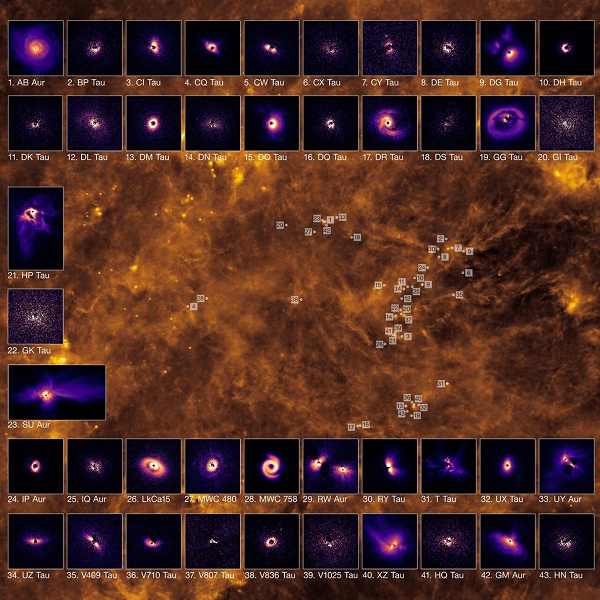New images provide insight into the earliest stages of planet formation
The Very Large Telescope (VLT) in Chile has provided scientists with unique images of planet formation around young stars. Images from one of the world's most powerful telescopes show that young planetary systems resemble miniature galaxies rather than disks of debris. The photographs clearly show spiral arms formed from dust, as well as less intense clouds of luminescent material. This survey gives scientists the opportunity to study the processes of planet birth. The image collection, containing more than 80 young stars and their protoplanetary disks, is one of the largest of its kind.
A lecturer at the University of Galway in Ireland, Christian Ginski and lead author of three papers detailing the observations, said the observations represented a significant breakthrough in the study of planet formation. He added that thanks to these observations, scientists are moving from studying individual star systems to a comprehensive analysis of star formation regions, which significantly expands knowledge in this field.
The first set of images was taken by the VLT High Contrast Polarimeter for Exoplanet Research (SPHERE). This instrument is equipped with a powerful adaptive optics system that corrects atmospheric distortion and produces clearer images. Additional observations using the X-shooter VLT spectrograph and the Atacama Large Millimeter/submillimeter Array added information on the mass of stars, as well as the amount of surrounding dust.
As a result of the study, it was found that the process of planet formation in various star formation regions of the Milky Way has its own characteristics. For example, in the Taurus and Chameleon I clouds, which are located about 600 light years from Earth, groups of stars with thin protoplanetary disks have been seen. In the Orion cloud, located about 1,600 light-years from Earth, scientists have discovered disks with an unusual shape that may indicate the presence of large planets. Some of these disks have spiral arms that may be the result of complex interactions between orbiting planets. Other disks are rings and cavities created during the formation of planets. The third type of disk is characterized by a smooth and seemingly inactive structure.
The results of the study allow scientists to better understand the process of formation of planets outside the solar system. Currently, more than 5,000 exoplanets are already known, whose planetary systems differ significantly from ours, scientists are still trying to identify the factors influencing the diversity of their structure. However, studying these processes is a difficult task, since star formation regions are located at great distances, and gas and dust clouds interfere with telescope surveys.
Future research in this area offers new prospects for astronomers. The new Extremely Large Telescope, which will soon begin operations in Chile, will allow scientists to take even more detailed images, and perhaps even allow them to detect small rocky planets in the inner regions of emerging planetary systems. This will open up new opportunities for studying exoplanets and help expand the map of knowledge about the process of planet formation.

